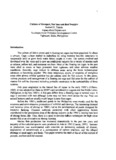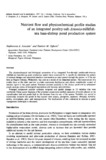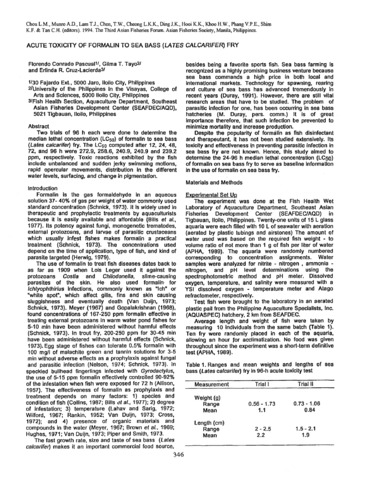Larval intervals of the sea bass, Lates calcarifer, based on the development of swimming and feeding functions.
Share
Abstract
Developmental sequences of characters concerned in swimming and feeding function were examined on laboratory-reared seabass larvae. Based on a scheme of development events constructed in this study, the early life hisory of the species can be divided into the following five phases. A (to about 2.5 mm TL): larvae have no noticeable skeletal structure concerned in swimming and feeding function. B (to about 4.5 mm TL): principal elements of swimming-related characters appear and start to develop; jaw and pharyngeal teeth strt to develop. C (to about 6.0 mm TL): position of the greatest body depth begins to shift bacward; dorsal and anal fin-rays attain to adult commplements; serration-like upper jaw teeth decrease in number and finally disappear. D (to 7.0 - 7.5 mm TL): notochord end flection is completed; conical spper jaw teeth start to develop, replacing the serration-like teeth. E (beyond 7.0 - 7.5 mmTL): larvae can be regarded as reaching juvenile stage in this phase from the view-point of functional morphology, although the first larvae with completely develop fin-ray counts was 10.25 mm TL in this study.
Subject
Taxonomic term
Collections
Related items
Showing items related by title, author, creator and subject.
-
Culture of grouper, sea bass and red snapper
Toledo, Joebert D. (University of the Philippines Aquaculture Society, Inc., 2001)Marine fish production has increased dramatically in the past ten years and majority of the cultured species were produced in Asia in 1992. Increase in production was accompanied with concerns on increasing outbreak of ... -
Nutrient flow and physicochemical profile studies of an integrated poultry-salt-Artemia-milkfish-sea bass-shrimp pond production system
Jumalon, Nepheronia A.; Ogburn, Damian M. (Wetteren, Belgium: Universal Press, 1987)The physicochemical and biological parameters of an integrated flow-through poultry-salt-Artemia-milkfish-sea bass-shrimp pond production system were monitored for 6 months to determine the pattern of nutrient changes and ... -
Acute toxicity of formalin to sea bass (Lates calcarifer) fry
Pascual, Florendo Conrado.; Tayo, Gilma T.; Cruz-Lacierda, Erlinda R. (Asian Fisheries Society, 1994)






